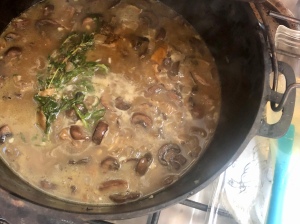As our friend Bob Bitchin says, “The difference between adventure and ordeal is attitude.” And as his first mate, Jody, says, “Sometimes it’s just an ordeal!”

It was our last night in the tranquil anchorage of Ensenada Grande Norte, a cove located off Isla Partida in the Sea of Cortez, Baja, Mexico. We’d just spent four idyllic days snorkeling and swimming in clear, warm water and taking our dinghy to explore the rugged island shoreline and pristine beaches. Aaron had grilled pork chops and pineapple for dinner, as it was the first afternoon that the wind hadn’t blown in the cove.
That should have been our first clue. At this time of year, there seems to always be a late-day breeze that is just enough to keep the barbeque from staying lit. But not today. We had watched the sun set and were relaxing in the cockpit when a fast puff of wind suddenly blew through the cove. Then a lull. We looked at each other. Then another blast, a brief pause, and full-force steady wind at 18 knots came at us. No build up, just an all-out blow with gusts to 24 kts.
Aaron pulled up the weather model (which he had checked earlier and noted that there was a chance of a very light wind developing later in the evening) and checked our anchor watch app. For four solid days our anchor had held firm and we never moved outside of the scope of the anchor watch perimeter. Now, it appeared we were dragging.
Without another word he started the engine, just in case, and we went topside together.
Continue reading









